About 43% of U.S. households own firearms. I did not grow up in one of them; and so, in the past, I was generally of the opinion that other people should not own firearms either. But, I changed my mind. This was largely due to a growing appreciation of the fundamental principles that led to the Second Amendment in the first place, especially in the case of the United States. Along the way, I learned something about firearms in the U.S., which is a lot different than what you hear in the media.
Basically, the legal ownership of firearms, especially long guns (rifles and shotguns) is amazingly problem-free. We have been doing it for over two hundred years, and it hasn’t really been an issue. Today, the homicide rate is about the lowest it has been in U.S. history. You would think people would celebrate this a little bit. It is true that the homicide rate in the U.S. is somewhat higher than in some other countries; but, it is lower than a lot of other countries. Firearm homicide in the U.S. is mostly related to 1) race, basically Blacks and Hispanics; 2) illegally-obtained firearms; 3) pistols; 4) in certain large urban areas, most of which already have strong restrictions against firearms. Much of it is related to crime, especially drug- and gang-related crime. It has been estimated that roughly 70% of all homicide is between two criminals who know each other, or a “falling out among thieves.” Blacks and Hispanics commit homicide at rates far higher than non-Hispanic Whites. Where firearms are used, this is 90% pistols; and, in 90%+ of situations, these firearms were illegally obtained.
Since everyone in law enforcement knows this, and it hasn’t changed in decades, then what is all the fuss about legal ownership of rifles and shotguns, mostly by non-Hispanic Whites? Well, it doesn’t take too much thinking to figure that out, and it appears to me that tens of millions of Americans have come to the same conclusion: there is an agenda to intentionally disarm the U.S. population. Why? I am sure it is for a good reason.
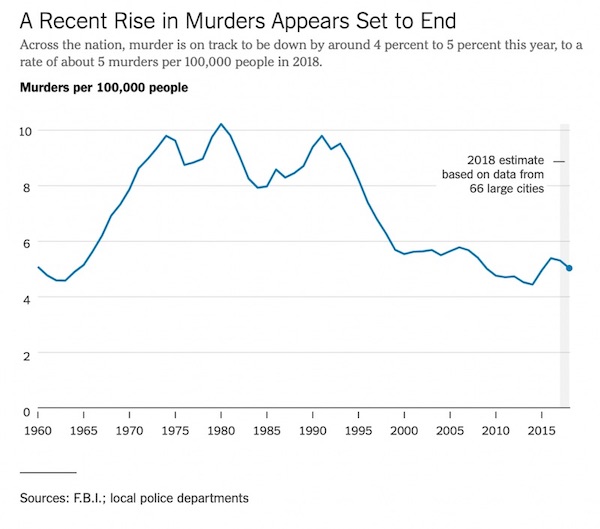
As we can see, the homicide rate today is the lowest in decades, and around the same as the lows of the 1960s. Those lows of the 1960s themselves represented some of the lowest figures in U.S. history.

Whether homicide rates were higher or lower in the 19th century seems to be a matter of some debate. This chart asserts that late 19th century homicide rates were very low; but it clearly has an anti-gun-control message and might be skewed:

This chart asserts that crime rates were quite high:
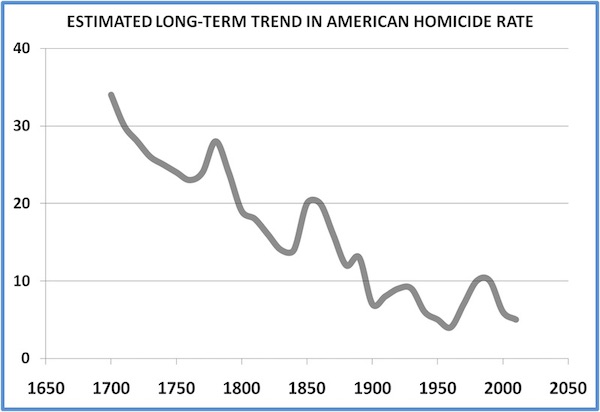
Here is some decent data:
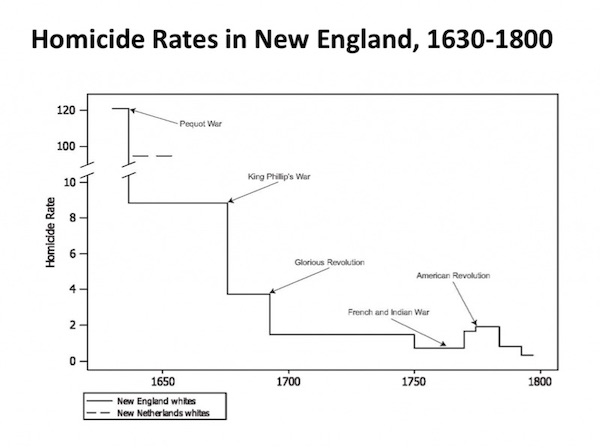
This is interesting, because we see the homicide rate among Colonial-era British (non-Hispanic White) around 1.0-2.0 during the eighteenth century.

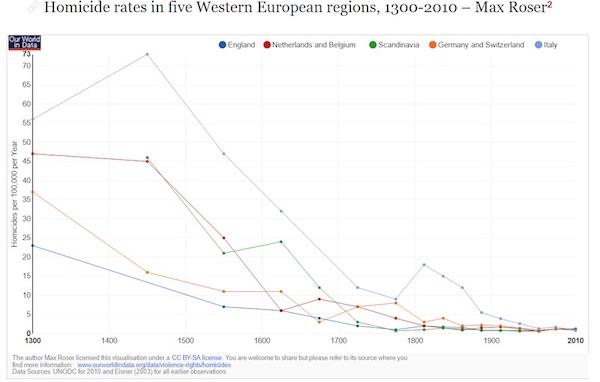
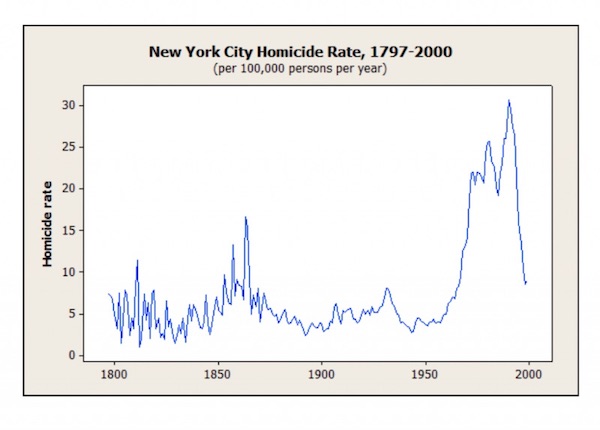
Homicide in New York City was probably well above the national average in the nineteenth century, just as it is today. But, it doesn’t seem to have been a problem. It looks like homicide rates during the nineteenth century were actually quite low.
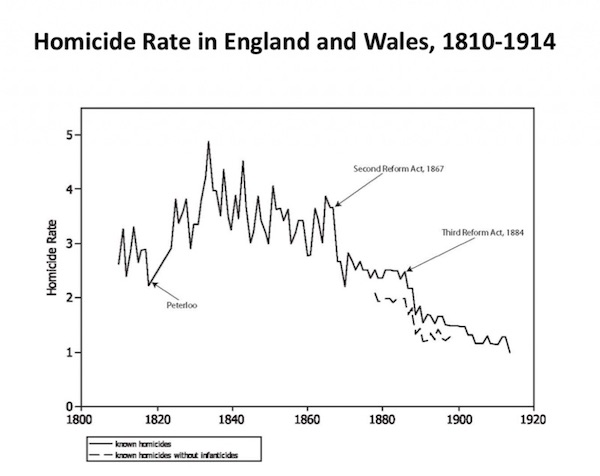
The homicide rate in England and Wales today is 1.20 per 100,000. For Scotland it is 1.10; in Canada, 1.80.
This fall in homicide rates in the U.S. has taken place during an expansion in firearms ownership:
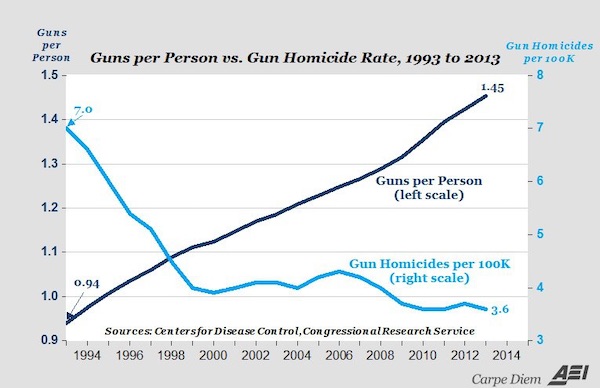
In general, I don’t emphasize the argument that widespread firearms ownership reduces crime. Nevertheless, we find that homicide rates are highest in cities with strict gun-control laws. The U.S. city with the lowest homicide rate is: Plano, Texas.
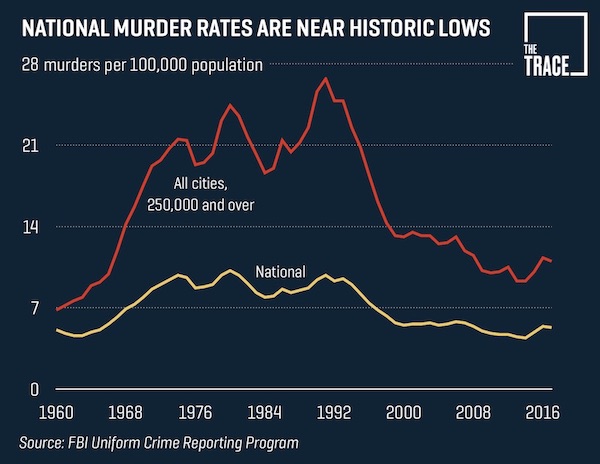
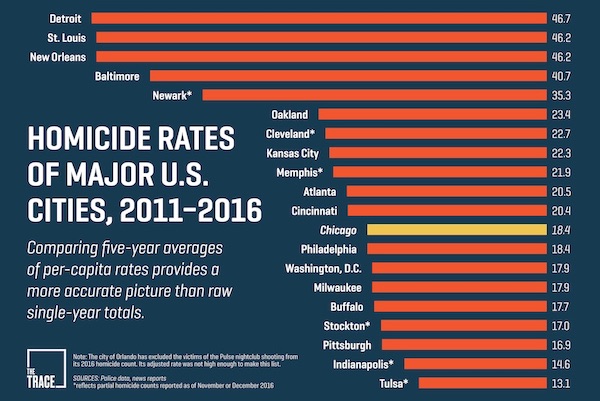
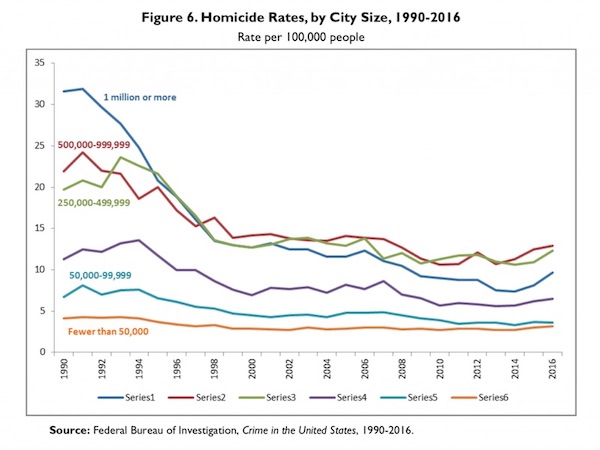
We find little correlation between gun ownership and homicide.
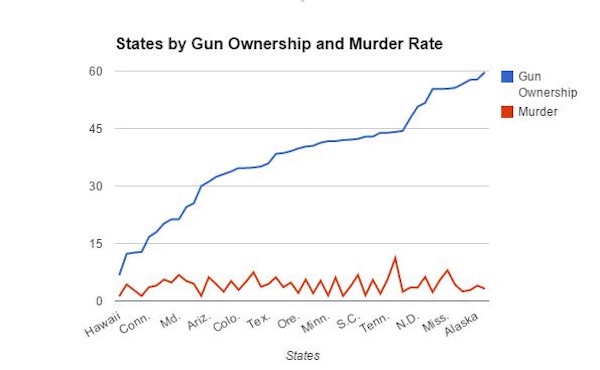
When talking about these topics, you often hear about “gun violence.” This includes suicide; and in fact, most deaths by “gun violence” are by suicide.
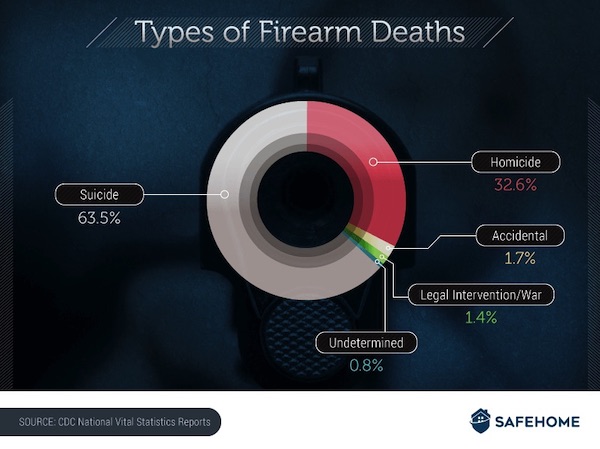
You can tell when people are intentionally trying to mislead you because they talk about “gun violence,” expecting you to believe that this means “firearm homicide.” It might even include violent crimes such as robbery and assault, in which a gun is present but nobody is hurt. It is true that firearms are a preferred method of suicide in the United States. It is also true that firearms ownership is correlated with suicide. But, people who commit suicide via sleeping pills often buy sleeping pills before committing suicide. People generally don’t commit suicide using borrowed firearms. The suicide rate in the United States is not particularly high (13.7 per 100,000, age-standardized rate); it is about the same as Europe (12.9), and lower than some places with very low firearms ownership, such as Japan (14.3). The suicide rate in the U.S. has picked up in recent years. Here too we see a lot of differences between races: blacks have an extraordinarily low suicide rate.
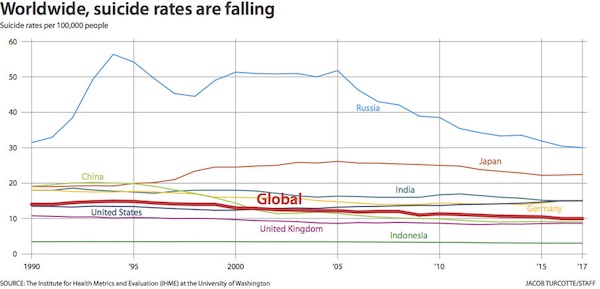
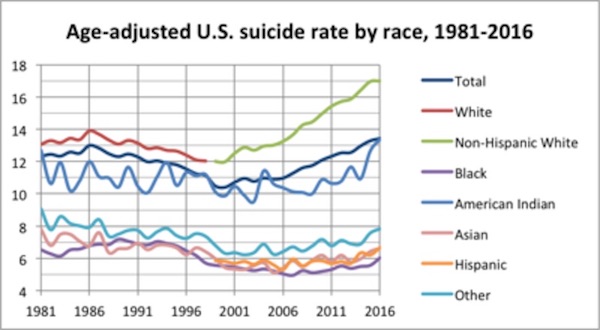
The percentage of households that own (legal) firearms has fallen somewhat over the years. But, it is still pretty high.
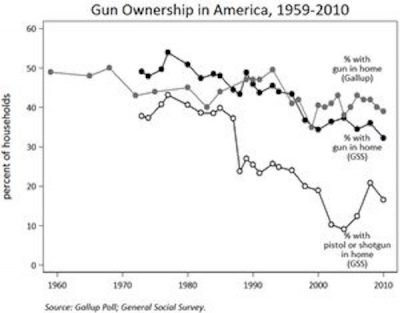
There is considerable discrepancy in this data.
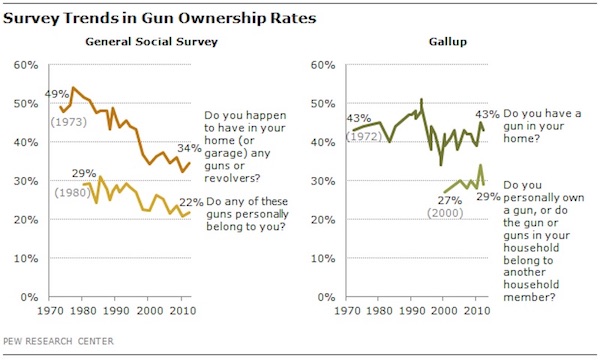
As you probably guessed, gun ownership is more common among Republicans. Nevertheless, 25% of Democrat households say they own firearms.
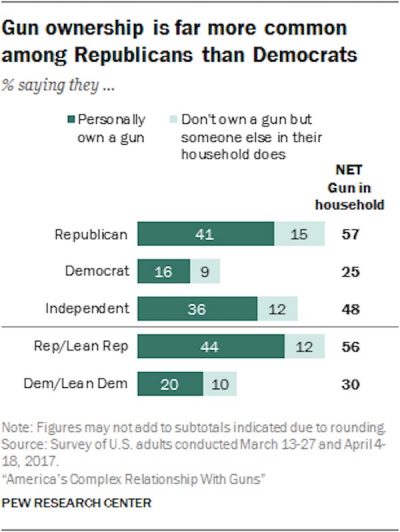
I think I will draw things to a close for this week, but please note the vast discrepancy between reality (lowest homicide rate in 100 years — hooray!) with the ridiculous headlines you’re being fed by the mainstream media about an “epidemic of gun violence.”
Of course nobody makes mistakes like this by accident; certainly not over a period of years. Thus, we must conclude that this is intentional.

